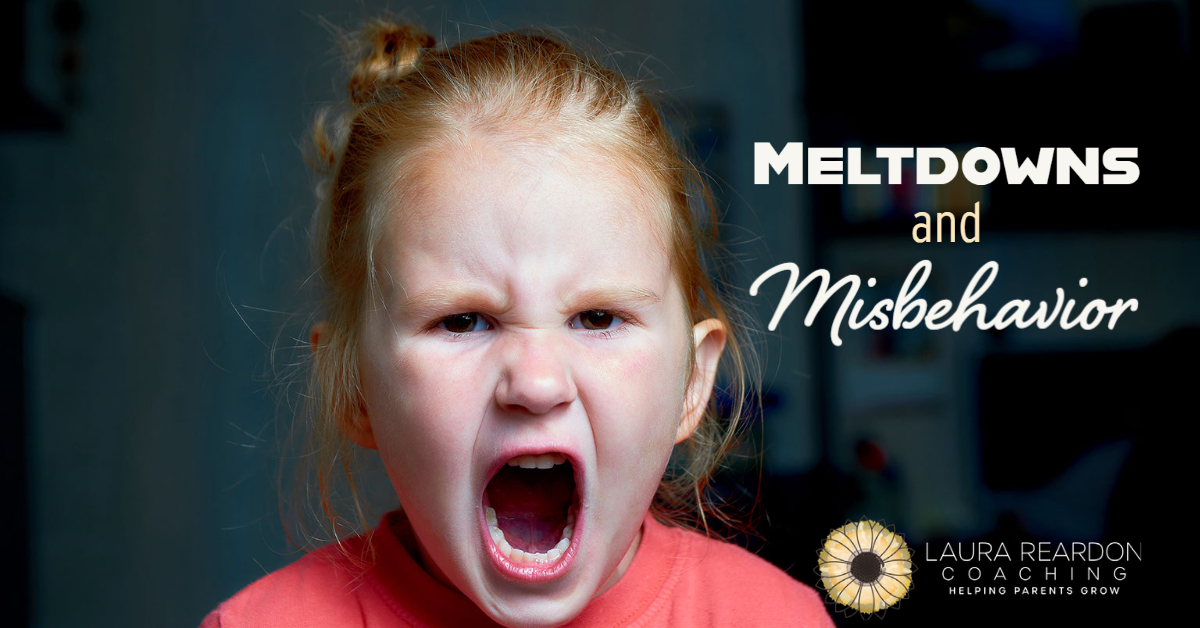
Meltdowns and Misbehavior
Something I want every parent to understand
Every family’s challenges and needs are unique …but there is something I want every parent to understand.
Our culture – our family, our friends, we as parents, and sometimes even our teachers and pediatricians – expect more from our kids in terms of managing their emotions and their behavior than is realistic.
Let me explain.
Neuroscience is the study of how our nervous system unconsciously affects our behavior. Our nervous system is a 2-way system of communication between our brain and our body that controls everything we do.
When our nervous system perceives safety, we are regulated; we are calm, flexible, and open to listening, learning, and problem solving.
But when our nervous system perceives a threat it unconsciously activates our fight, flight, or freeze response. This rapid response causes physiological changes to our body to prepare us to fight, run away, or freeze to protect ourselves from danger. We have moved to a dysregulated state; we are defensive and inflexible.
For our ancestor’s our fight, flight, or freeze response helped them survive. But in today’s world we experience fewer physical threats and so our threat response will often get activated during non-life-threatening situations when we experience strong feelings such as fear, anger, hurt, embarrassment, or helplessness or when our core needs for things such as sleep, food, hydration, movement, connection, downtime, and autonomy are unmet.
When we look at behavior through the lens of neuroscience, meltdowns and misbehavior make sense:
- For example when they expect to the blue cup and they get the green cup, when they don’t have the language to communicate their feelings and needs, when they can’t get their toy to do what they want, when they ask for something and we say no, when they want our attention but we’re feeding the baby, when they need to transition from doing one thing to doing another – it’s time to get out of the bathtub, brush their teeth, or get dressed and they don’t want to, when they try to tie their shoes all by themselves but are unable to, when another child grabs something from them, when their socks feel too tight…these experiences create strong feelings in them such as fear, anger, hurt, embarrassment, or helplessness.
- And when they experience strong emotions – or when their environment doesn’t support their need for sleep, food, hydration, movement, connection, downtime, and autonomy (or often a combination of things) – these body sensations aren’t truly dangerous, but their nervous system unconsciously perceives them as a threat which triggers their fight, flight, or freeze response and their body reacts as if it is. They become dysregulated and lash out or withdraw to defend themselves. For those who respond with a fight response, their behavior can look like crying, yelling, grabbing, hitting, or biting. For those who respond with a flight response, their behavior can look like doing anything to get away. And for those who respond with a freeze response, their behavior can look as if they are frozen like a deer in headlights; too frightened or surprised to move or think.
- When in a fight, flight, or freeze state our body is trying to prioritize, so anything it doesn’t need for immediate survival is placed on the back burner. This includes the part of our brain called the pre-frontal cortex which is responsible for logical thinking. We are biologically shut down to listening, learning, or problem solving. Instead, we are defensive and inflexible.
- As challenging as it is for us as adults to develop awareness of when we become dysregulated and develop strategies for calming ourselves so we can re-engage our pre-frontal cortex and respond in more effective ways, it’s way harder for our kid to manage their emotions and behavior because their pre-frontal cortex is just beginning to develop and won’t be fully developed until their mid twenty’s.
- And we want to recognize individual differences. Neuroception describes how our brain automatically and subconsciously makes sense of sensations in our body and judges them as safe or not safe. Neuroception is unique to each person based on their genetics, past experiences, constitution, and a wide variety of human experiences. We each respond to the world in our own way which is why each of us is unique in our level of reactivity to different things.
When we shift to an approach that is grounded in neuroscience, we can recognize our perception that meltdowns and misbehavior are purposeful is outdated. In most cases they simply aren’t. There are millions of invisible triggers that can unconsciously trigger our kid’s fight, flight, or freeze response. When this happens, it’s important to remember that they’re not choosing their behavior, but rather their nervous system is choosing it.
But what’s a parent to do; how can we help our kid learn to manage their emotions and their behaviors?!
Counting to three, time-outs, rewards, consequences, or ignoring unwanted behaviors were considered state of the art tools over 20 years ago… but looking at behavior through the lens of neuroscience is creating a paradigm shift in parenting and now we have more informed and more effective tools for helping our kid learn to manage their emotions and their behaviors.
Books and classes can be great resources for learning these new ways of responding. But as a Parent Coach, I specialize in creating Personalized Parenting Plans because every family’s challenges and needs are unique.
A Personalized Parenting Plan is the tool you need in your pocket to stop yelling and to start responding to big emotions and challenging behaviors in a way that naturally elicits calm, listening, and cooperation and in a way that meets the individual needs of your family.
Let’s create a Personalized Parenting Plan…and more peace in your family.




